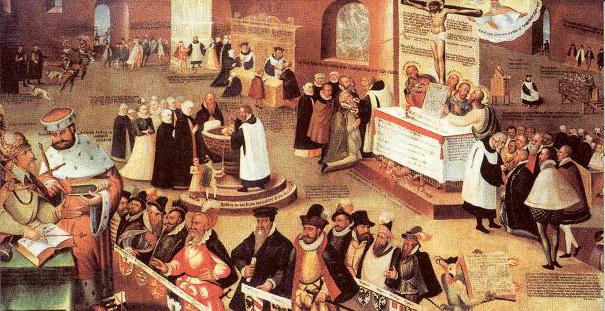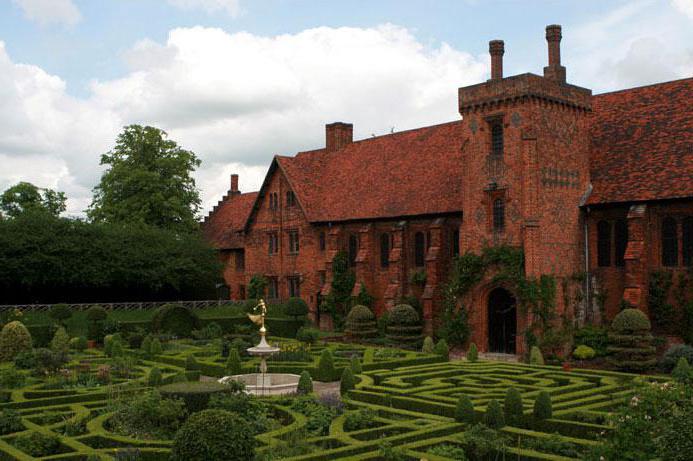Reformation in Europe
By the end of the Middle Ages the Catholic Church wasone of the richest and most powerful organizations in Europe. But this power was only apparent: among the parishioners and the simple and noble, the discontent with the all-powerful clergy grew, which eventually turned into a movement for the restructuring of the church - the Reformation.
Causes
By the end of the XV century in many countries of Europeformed a strong royal power. Kings, relying on the army and bureaucratic apparatus, were dissatisfied with the intervention of the Pope in their affairs. Their valuable instructions to the monarchs were not needed. The kings did not give rest to the wealth of the Catholic Church, which was one of the largest landowners in Europe. Yes, if only that! On tithing, paying for divine services and selling indulgences, the clergy earned a lot of money, which "swam away" to distant Rome. And this, of course, did not please the monarchs.
Simple people did not like church servicesother. First, the high cost of rites and various requisitions. Secondly, the language of worship - not all understood what the priest said in his Latin. But even more did not suit the fact that the church sanctified the existing inequality. It turned out that a man of common origin had to remain a lifelong nobody, even if he got himself into people, getting rich. Or tolerate self-abuse on the part of the powers that be only because it is so predicted from above.
The Beginning of the Reformation
The biggest dissatisfaction is the Catholic Churchcaused in fragmented Germany. Therefore, it was with her that the Reformation began in Europe. In 1517 a young theology professor Martin Luther hung out 95 theses on the doors of the palace church - his views on church orders. The reason was the rampant trade in indulgences. These documents were, in modern terms, certificates of forgiveness of sins. They were sold by monks traveling around Germany. Due to indulgences, the Pope planned to rebuild the church of St. Peter in Rome. Luther condemned all these orders. He believed that the Pope had no right to publish indulgences. Luther also opposed the lavish ceremonies, monasticism and celibacy given by the priests. To make the Bible more understandable for ordinary Germans who did not know Latin, he translated it into his native language.
Bold sermons Luther made the PopeLeo X is worried. He urged him to renounce his views, and when he refused, declared him a heretic and excommunicated him. But Luther did not frighten it - on the contrary, having received the papal bull, he tore it to shreds. Yesterday's professor had a lot of supporters, including quite influential ones. One of the German princes hid it in his castle, where Luther wrote theological works. Meanwhile, the Reformation in Europe developed more and more actively. Luther had followers who suggested that they go even further by establishing universal equality. Their leader, Thomas Münzer, led an uprising that grew into a peasant war. The German princes quickly defeated the poorly armed insurgents who did not own a military affair. The uprising was brutally suppressed. After this, the Reformation in Germany finally passed into the hands of the secular nobility.
The struggle between the two churches
True, not all aristocracy tookLuther's ideas are positive. Between the Catholics and Protestants (as the adherents of the new doctrine began to call it), armed struggle began. It lasted a long time and ended with the Augsburg peace, which established that every prince himself has the right to determine what religion will be in his domain. The idea to rebuild the church was contagious, and soon the Reformation in Europe spread to the south of Germany, Switzerland, France, Scandinavian countries. In the Netherlands, local Protestants generally raised an uprising against Spanish rule and achieved independence.
The Reformation in England developed in a peculiar way. King Henry VIII demanded from the Pope that he allowed him to divorce his next wife. He refused, and the monarch announced that the English church no longer depended on Rome. Thus, in 1534 the king became the head of the clergy in this country, and at the same time the owner of all church property. It is clear that the Pope's refusal was for him only an excuse to take to his hands everything that belonged to the church. And it was very quickly done. The rest of the Anglican church, as it was now called, for a long time was similar to the Catholic.
However, by the middle of the XVI century the Catholicthe clergy came to their senses, and the Reformation in Europe began to face serious resistance. The vanguard of the struggle against the Protestants was the Jesuit order, founded in 1540. His followers created a network of schools in European countries that gave an excellent education and instilled in the faithful the Catholic Church. The Jesuits did not shun and spied on, entangling all the royal courts with their agents. These measures largely stopped the Reformation. But the Catholic Church had no previous power.








